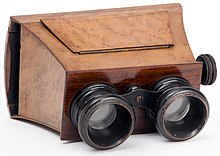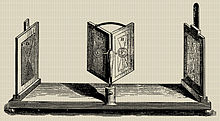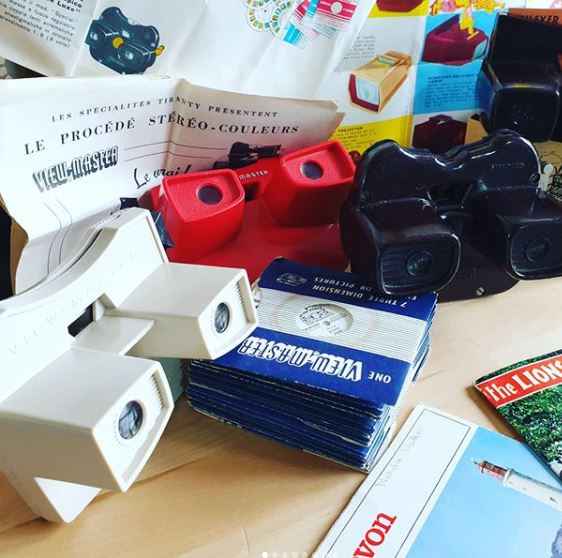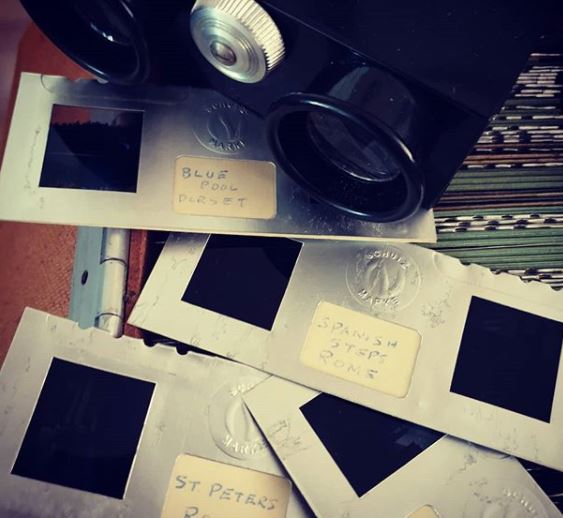Stereoscopy (also called stereoscopics, or stereo imaging) is a technique for creating or enhancing the illusion of depth in an image by means of stereopsis for binocular vision. The word stereoscopy derives from Greek στερεός (stereos) ‘firm, solid’, and σκοπέω (skopeō) ‘to look, to see’. Any stereoscopic image is called a stereogram. Originally, stereogram referred to a pair of stereo images which could be viewed using a stereoscope.
Most stereoscopic methods present two offset images separately to the left and right eye of the viewer. These two-dimensional images are then combined in the brain to give the perception of 3D depth.

Brewster Style Viewing Device 
Wheatstone Mirror Stereoscope
It was first invented by Sir Charles Wheatstone in 1838, and improved by Sir David Brewster who made the first portable 3D viewing device.
Wheatstone originally used his stereoscope (a rather bulky device) with drawings because photography was not yet available, yet his original paper seems to foresee the development of a realistic imaging method
When photography started getting easier to work with, lots of stereoscopic images were created.

Getting to more modern methods of photography, there were cameras made specifically to take stereoscopic images
usually 35mm, but lots of differnet formats have been used. Also thanks to the popularity of Viewmasters, lots of different formats were made, like the viewmaster disks and even some formats with rows of images

The one’s i like are the one’s created by holidaymakers with one of the adapted cameras. I have a small collection of these with a rare 1950’s Rada standard II stereoscopic Viewer.
Now you can create digital stereoscopes and using a cheap cardboard 3d viewer on a mobile phone. It does take a bit of planning but you can create interesting images, and video.

But in my opinion, you can’t beat the old school slides.
Thanks for looking through the blog and some of our latest items. We love antique and vintage items, which can evoke great emotions.
We are a small team who want to keep history and story telling alive.